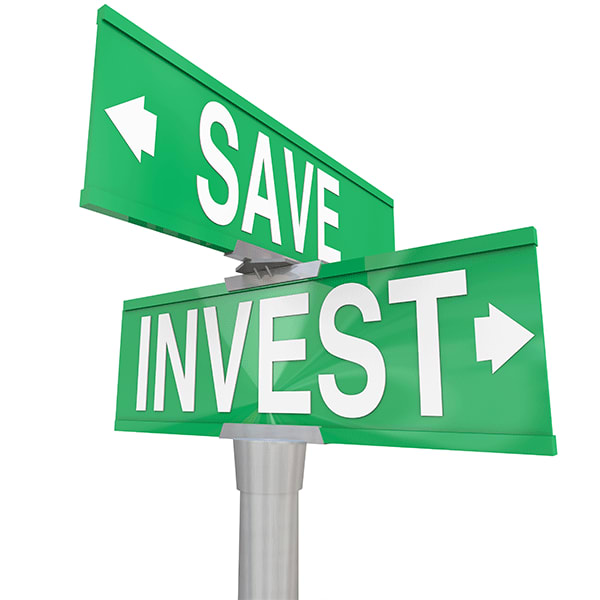The gemara gives us sage advice about how to diversify our portfolios:
“Rebbe Yitzchak said, a person should always divide his money into three: one third in land, one third in trade, and one third in hand” (Bava Metzia 42a). The need to keep a certain portion in money (“in hand”) is hinted at in the verse, “And you shall convert [produce of the second tithe] into money, and bind it in your hand…” (Devarim 14:25)
This advice is not precisely a legal obligation, but it is mentioned in a number of places by halakhic authorities as appropriate guidance. (See for example Magen Avraham 156:1.) What is the significance of this breakdown?
The Maharsha gives an explanation based on ordinary business considerations. Translating his commentary into modern finance terminology, he writes that land has low risk and low return; merchandise has high risk and high return. Both lack liquidity. Money, by contrast, has virtually no risk, no return, and high liquidity. Thus Rebbe Yitzchak is giving advice on maintaining a balanced and hedged portfolio.
The great Chasidic leader Rav Nachman of Breslav gives a more spiritual explanation of these three categories. He points out that the root for “wealth”, “osher”, appears three times in the Torah:
We first encounter this term when Avram refuses to accept the spoils of war from the king of Sodom. His justification is that he doesn’t want the king to vaunt himself with the claim, “I enriched Avram”. (Bereshit 14:23; we discussed this same passage a few weeks ago.)
The second time this root appears is when Rachel and Leah concur with Yaakov’s decision to flee with his own flocks from Lavan, explaining: “For all the riches which G-d has saved from our father, it is ours and our sons’…” (Bereshit 31:16)
The final time is when the Torah states that all must give equally to the collection of the half-shekel contribution to the tabernacle: “The rich shall not add nor the poor detract from half a shekel…” (Shemot 30:15)
Rav Nachman explains that these three mentions correspond to three different aspects of the challenge of wealth. We may present his explanation as follows:
Money in land corresponds to the comment of Rachel and Leah. Money which is “ours and our sons” is employed for mundane needs. Yet the highest use of wealth is not for indulgence or accumulation but rather to give a person a feeling of independence and scope, which help him attain profound insight in Torah and in his understanding of HaShem’s ways. Rachel and Leah are saying that currently, while the family is under the influence of Lavan, all of the wealth is “our and our sons”; it is only used for material needs. They recognize that once Yaakov flees, this situation will be altered; he will be able to take advantage of his wealth to puruse spiritual advancement.
This message is conveyed by holding land. When we have part of our money in land, we are reminded that physical effort is required to make it realize its potential; this in turn reminds us that we need spiritual effort to make our wealth bear fruit and realize its highest potential: to free us from everyday worries and enable us to serve G^d with breadth of understanding.
Money in commerce corresponds to the statement of Avra(ha)m. Rav Nachman gives scriptural evidence that among the repressive decrees customary in Sodom was one prohibiting commerce, which Rav Nachman likens to the festivals. It seems that the likeness is that both markets and festivals serve to bring together people from many places and differing ways of life and join them together in a common cause. (Perhaps this is the meaning of the Mishna which states that “Mine is mine and yours is yours” may be called the trait of Sodom – Avot 5:10. Each person held on to his own wealth without creating new wealth and new human connections by engaging in commerce.) Avraham Avinu was unwilling to take money which was not obtained and employed in a way which is economically and humanly construc- tive.
Money in hand reminds us of the half-shekel. The likeness is as follows: the half-shekel was an atonement for the people. Our concept of atonement is not a mechanistic one, but rather stems from an acknowledgment that our souls are in the hands of HaShem, who can do with us as He sees fit; acts of atonement such as the half-shekel persuade Him to judge us favorably. When we keep a certain amount of money liquid, it reminds us of this trait of judg- ment, of absolute freedom of action.
So following Rebbe Yitzchak’s advice to divide up our wealth can remind us of three important principals of spiritual development. Wealth in land reminds us that just as the field bears no material blessing without our exertions, likewise our possessions won’t bring us spiritual attainments unless we invest effort and initiative. Wealth in merchandise reminds us that human growth is ultimately attainable only by fellow- ship and cooperation – just as gains from trade in commerce can be achieved only through cooperation. And wealth in hand, giving us complete freedom of disposal, reminds us that our concept of Divine supervision is based on a concept of complete freedom of human will and complete freedom of Divine discretion to pardon us when our acts are worthy.(Based on Likutei Moharan ch. 60.)
Rabbi Asher Meir is the author of the book Meaning in Mitzvot, distributed by Feldheim. The book provides insights into the inner meaning of our daily practices, following the order of the 221 chapters of the Kitzur Shulchan Aruch.
The words of this author reflect his/her own opinions and do not necessarily represent the official position of the Orthodox Union.



